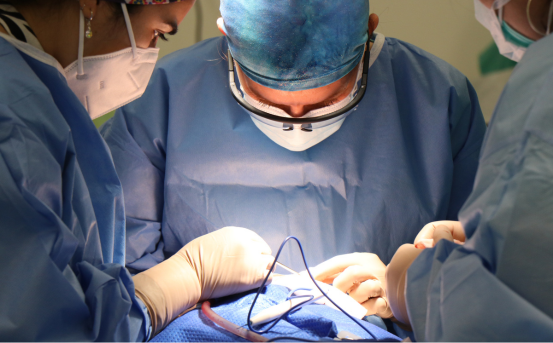Introduction
Varicose veins are enlarged, twisted veins commonly found in the legs and feet due to prolonged standing, genetics, obesity, or age. While they can be purely cosmetic for some, others may experience discomfort, heaviness, pain, itching, and swelling. If left untreated, severe cases of varicose veins can lead to skin changes, ulcers, or blood clots. Fortunately, modern medical science offers several minimally invasive and effective procedures to treat varicose veins and restore healthy blood flow.
The treatment of varicose veins aims to eliminate or seal off faulty veins so that blood can flow through healthier, properly functioning veins. With advances in vascular medicine, these procedures are now safer and more comfortable, with minimal downtime. Below are the major types of varicose vein treatment procedures available today.
Varicose Vein Treatment Procedure
- Sclerotherapy :- Sclerotherapy is one of the most commonly used non-surgical methods for treating small to medium-sized varicose veins and spider veins. In this procedure, a medical professional injects a sclerosing agent directly into the affected vein. This solution irritates the inner lining of the vein, causing it to collapse and eventually get absorbed by the body. The procedure usually takes 30 to 45 minutes and does not require anesthesia. It is performed in an outpatient setting and is relatively painless. Multiple sessions may be required depending on the number and size of veins being treated. After sclerotherapy, compression stockings are typically recommended to promote healing and proper circulation. Patients can walk immediately after the procedure and resume regular activities the same day.
- Endovenous Laser Therapy (EVLT) :- Endovenous Laser Therapy is a minimally invasive treatment option for larger varicose veins. A tiny incision is made near the affected vein, and a thin laser fiber is inserted through a catheter. The laser emits thermal energy, which heats the vein wall, causing it to collapse and seal shut. The procedure is performed under local anesthesia and usually takes about 30 to 60 minutes. Patients may feel slight pressure or a warming sensation during the procedure. Post-treatment, the sealed vein is reabsorbed by the body, and blood flow is redirected to healthier veins. Patients are encouraged to walk shortly after the procedure to promote circulation. Recovery is quick, with most individuals returning to work and normal activities within a couple of days.
- Radiofrequency Ablation (RFA) :- Radiofrequency Ablation is similar in approach to EVLT but uses radiofrequency energy instead of laser energy to close the vein. A catheter is inserted into the diseased vein through a small incision. Once positioned correctly, the catheter delivers radiofrequency energy that heats the vein wall, causing it to shrink and collapse. This procedure is typically done under local anesthesia and takes about 45 minutes. It is highly effective in relieving symptoms like leg pain, swelling, and fatigue. Compression stockings are recommended for about a week following the procedure. Patients often experience immediate improvement in their symptoms, and the recovery time is minimal. Like EVLT, RFA has a high success rate and is preferred for treating saphenous veins and other large varicose veins.
- Ambulatory Phlebectomy :- Ambulatory phlebectomy is a minor surgical procedure used to remove superficial varicose veins that are too large for sclerotherapy but not suitable for EVLT or RFA. In this procedure, the surgeon makes several tiny incisions along the length of the affected vein and uses a specialized hook to extract it. The procedure is performed under local anesthesia and is usually completed within an hour. There is no need for stitches, and the incisions are so small that scarring is minimal. Patients can usually walk immediately after the procedure and return to regular activities within 1–2 days. The results are immediate in terms of cosmetic improvement and symptom relief, and recurrence rates are low when the underlying vein disease is treated properly.
- Vein Ligation and Stripping (Traditional Surgery) :- Vein ligation and stripping is a more traditional surgical approach that is now used less frequently due to the availability of minimally invasive techniques. It involves making incisions in the skin to tie off (ligate) and remove (strip) the damaged veins. The procedure is performed under general or spinal anesthesia and may require an overnight hospital stay. Recovery can take 1 to 2 weeks, and patients may experience bruising and discomfort. Compression stockings are essential during the healing period. Although effective, this method has largely been replaced by EVLT and RFA due to their quicker recovery times and lower complication rates.
- Foam Sclerotherapy :- Foam sclerotherapy is a variation of traditional sclerotherapy used for larger veins. Instead of using a liquid solution, the sclerosant is turned into a foam before being injected. The foam covers a larger surface area and stays in contact with the vein wall longer, making it more effective for bigger or deeper varicose veins. This outpatient procedure takes about 30 minutes and is performed under local anesthesia. The foam is injected under ultrasound guidance to ensure accuracy. Patients are advised to wear compression stockings for a few days post-procedure. Foam sclerotherapy is generally safe and effective, especially when combined with other treatments like EVLT or RFA.
- VenaSeal Closure System :- VenaSeal is a newer, FDA-approved, minimally invasive treatment that uses medical adhesive (glue) to close varicose veins. During the procedure, a catheter is guided into the affected vein under ultrasound guidance, and the medical adhesive is delivered along the vein’s length to seal it shut. Unlike other procedures, VenaSeal does not require heat or tumescent anesthesia, and there’s minimal discomfort. There’s also no need for compression stockings post-procedure. The treatment is quick and effective, with most patients returning to daily activities immediately. VenaSeal is ideal for patients looking for a no-heat, no-compression alternative to laser or radiofrequency procedures.
Conclusion
Varicose vein treatment procedures have become increasingly advanced, offering patients a wide variety of effective, safe, and minimally invasive options. Whether it’s a small spider vein or a larger bulging varicose vein, there is a suitable treatment available that fits your needs, medical history, and lifestyle. Procedures like sclerotherapy, EVLT, RFA, and VenaSeal provide lasting results with quick recovery and minimal discomfort.
Early treatment of varicose veins not only improves your appearance but also prevents complications like skin ulcers, blood clots, or chronic pain. Consulting a vascular specialist is the first step to identifying the best course of action tailored specifically to your condition. With today’s treatment options, living with varicose veins no longer needs to be a permanent condition safe and effective solutions are within reach.























